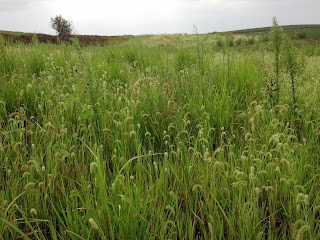The blog was in desperate need of an update. Growth this past year started out slow with a cool spring, but has progressed nicely since. Overall the production of the miscanthus is somewhat disappointing as this is now the third year and growth is marginally over 6' in height and there is significant gaps between plants. Only in the high and mid populations of original planting could a feasible crop be had. The low and more recommended population is still a long way from production ready. We are lucky only one acre was used for this experiment. I did try to apply for an extension to the project by proposing to collaborate with another farmer to make biochar from miscanthus and study its effects on soil fertility. Sadly, we did not receive the grant. I plan to self fund and continue the miscanthus study but on a very financially constrained budget until we can work out a way to do something with the biomass. I hope to continue the work, else we may need to return the field to crop production if we do not see any type of gains from the Miscanthus crop.
These pictures were taken in the end of May 2013. This was similar to the date it was planted 2 years earlier, in 2012 it was almost knee high by this date. It was clear the cold weather slowed the emergence in the spring.
This group then was taken on the fourth of July, Another common date for past pictures. The significant gaps can be seen here in the full field views. This is from the entrance. High population to the right, low to the left. There is some good growth happening, but seems to be lacking the high level of production expected.
and this one was from the back of the field this is mostly the medium and low population area
The one really good performing area in the high population area is below. This is also at July 4 time frame and I think shows the best results that could be expected from a similar plot.
Then the last group of pictures I have are from July 27. It is amazing to see how much less the miscanthus crop (although showing the best growth yet) compares to even the poorest end-rows in the corn crop growing right next to it.
Here is another picture from late July.
Through the fall I will continue to monitor the growth and post another update when the information is available.
























